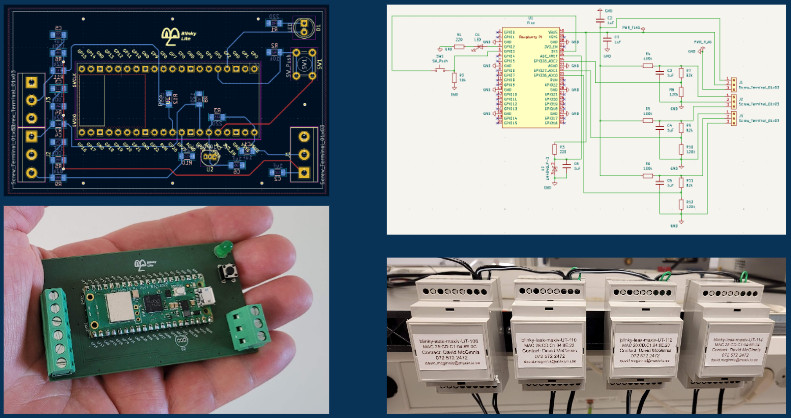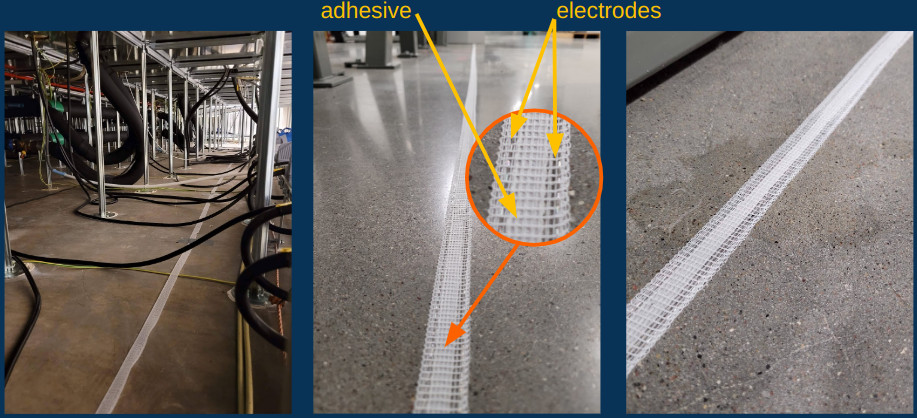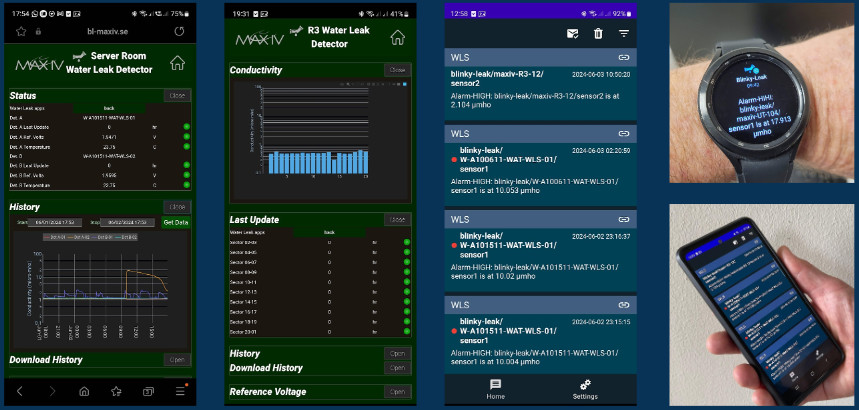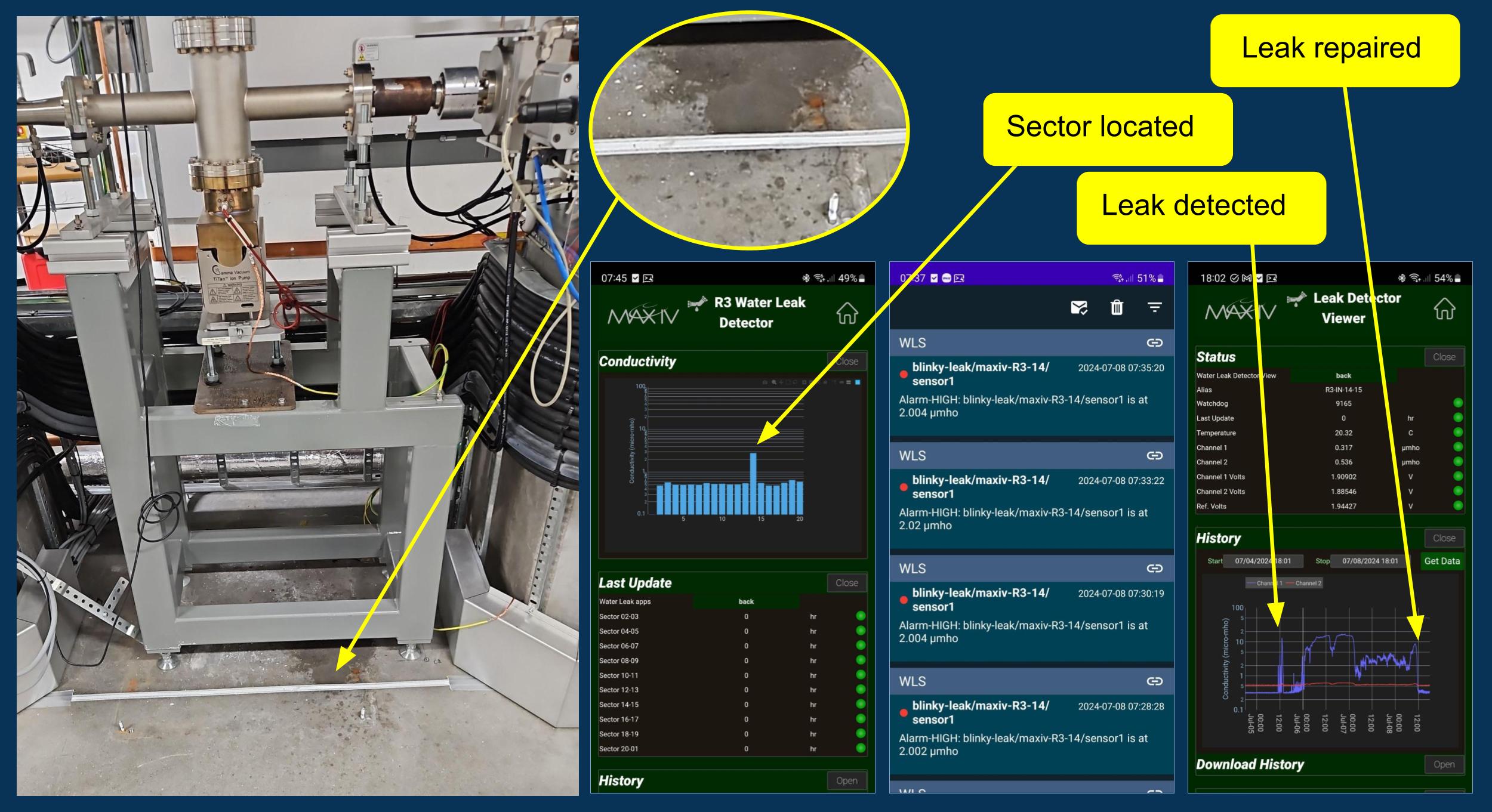Place of installation: MAX IV laboratory in Lund/Sweden
Background: Water leaks pose significant risks to particle accelerators because they can cause electrical short circuits, damage sensitive equipment, contaminate vacuum systems, and disrupt thermal regulation. Leaks may also spread radioactive material from activated components, complicating cleanup and increasing personal hazards. Such incidents lead to costly repairs, facility downtime, and safety risks to personnel. Preventive measures like leak detection systems are crucial to safeguard the reliability of such facilities.
For preventive measures, the MAX IV computer server rooms as well as the 520 meter synchrotron ring had to be equipped with leak detectors. The challenge was to do this with the least possible impact to the already existing facility infrastructure (i.e. avoiding to pull new control cables).
Implementation: Fourteen wireless Blinky-Leak boxes, each of them able to read two 20 meter long sectors, comprise the system. The complete system was installed by one person in less than 3 weeks and is operational and connected to the MAX IV notification system since fall 2023 (see live system).
 Blinky-Leak boxes electronics design.
Blinky-Leak boxes electronics design.
 Leak detector installation at MAX IV.
Leak detector installation at MAX IV.
 Leak detector mobile user applications and alarm screens.
Leak detector mobile user applications and alarm screens.
Benefit: Proactive leak prevention at MAX IV.
Example: On Friday 5-July 2024, the Blinky-Lite water leak detector system at MAX IV sent out a notification that there was a leak in Sector 14. On Monday 8-July, the repair crew found a cooling hose leaking in Sector 14 and promptly repaired it.
 Leak detection system detecting leak at MAX IV. Alarm screen and user app.
Leak detection system detecting leak at MAX IV. Alarm screen and user app.
Our offering: A wireless leak detection systems, that